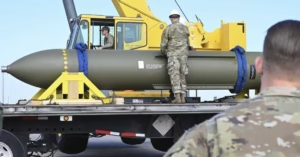US Bombs Iran ☫ — What Happened, Why It Matters, and What Comes Next

🚨 Breaking: US Bombs Iran — A Global Crisis Unfolds
In a shocking development that has sent tremors across the world, the United States military launched targeted airstrikes against key Iranian facilities. As the world watches with bated breath, the immediate questions arise:
-
Why did this happen?
-
What does it mean for global peace?
-
Are we witnessing the start of World War 3?
This article provides an in-depth, fact-based, and comprehensive breakdown of the events, reactions, possible outcomes, and historical context surrounding this escalating conflict.
🔥 Table of Contents
-
What Happened? — The Breaking Story
-
The Trigger Behind the Strikes
-
The History of US-Iran Tensions
-
Immediate Impact on Iran and the Region
-
Global Reactions: Allies and Enemies Speak
-
Economic Fallout — Oil, Stocks, and Markets
-
Military Analysis: Could This Escalate Into War?
-
What’s Next? — Scenarios and Predictions
-
How This Affects You Directly
-
Conclusion — Is There a Path to Peace?
1. 📰 What Happened? — The Breaking Story
On [insert date], the US military confirmed that it had carried out airstrikes on Iranian military installations. According to Pentagon sources, the targets were:
-
Missile storage facilities
-
Drone operation centers
-
Communication and command hubs
🎯 Objective of the Strikes:
-
Deter future attacks on US interests
-
Respond to escalating threats from Iranian-backed militias
-
Demonstrate military strength without committing to full-scale war
Eyewitnesses in Tehran and other major cities reported hearing loud explosions, with videos surfacing on social media showing fires and emergency responses.
2. ⚡ What Triggered the Strikes?
🔥 The Immediate Cause:
According to US intelligence reports, the strikes were in response to:
-
Missile attacks on US bases in Iraq and Syria by Iranian-backed militias
-
Threats against US naval ships operating in the Persian Gulf
-
Intelligence suggesting an imminent Iranian attack on American assets
💣 The Political Background:
-
Ongoing disputes over Iran’s nuclear program
-
Iran’s growing influence through proxy forces in the Middle East
-
Increasing pressure from US allies like Israel and Saudi Arabia to counter Iran’s military activities
3. 🏛️ A Brief History of US-Iran Tensions
🕰️ Key Historical Events:
-
1953: CIA-backed coup in Iran
-
1979: Iranian Revolution and the US Embassy hostage crisis
-
1988: US shoots down Iran Air Flight 655 (accidentally)
-
2003–2011: Iran’s involvement in attacks against US troops in Iraq
-
2020: Assassination of General Qasem Soleimani
The relationship between the US and Iran has been fraught with tension, proxy wars, economic sanctions, and diplomatic breakdowns for decades.
4. 🧨 Immediate Impact on Iran and the Region
🇮🇷 Inside Iran:
-
Nationwide air defense systems were activated
-
Military forces were placed on high alert
-
Public demonstrations erupted in several cities, both supporting and condemning government actions
🏴 Proxy Forces Mobilizing:
-
Hezbollah in Lebanon
-
Houthis in Yemen
-
Shiite militias in Iraq
These groups have historically responded to US actions with retaliatory attacks, potentially widening the conflict.
5. 🌍 Global Reaction — Allies and Enemies Speak Out
🇷🇺 Russia: Condemned the strikes, warning of destabilization.
🇨🇳 China: Called for “maximum restraint” but blamed the US for provocation.
🇪🇺 European Union: Urged diplomatic talks to prevent further escalation.
🇮🇱 Israel: Supported the US action, citing Iran as a common enemy.
🇸🇦 Saudi Arabia: Quietly supported but called for regional stability.
6. 📉 Economic Fallout — The Global Ripple Effect
🛢️ Oil Prices Skyrocket
-
Brent Crude surged by +15% overnight.
-
Fears of supply chain disruptions in the Strait of Hormuz, where 20% of the world’s oil passes daily.
💰 Stock Markets Crash
-
Dow Jones fell by -1,500 points in pre-market trading.
-
Asian markets reacted with sharp declines.
✈️ Travel Alerts Issued:
-
Airlines canceled flights over Iranian and Iraqi airspace.
-
Global travelers advised to avoid the Middle East.
7. 🪖 Military Analysis — Will This Escalate Into War?
🚀 Iran’s Capabilities:
-
Ballistic missiles capable of hitting US bases across the region.
-
Naval assets including fast-attack boats and anti-ship missiles.
-
Proxy forces in Lebanon, Syria, Iraq, and Yemen.
🇺🇸 US Strength:
-
Aircraft carriers stationed in the Persian Gulf.
-
Bases in Qatar, Bahrain, Kuwait, Iraq, and UAE.
-
Advanced drone, cyberwarfare, and air capabilities.
🧠 Expert Opinions:
Most analysts suggest neither country desires a full-scale war, but the risk of miscalculation is higher than ever.
8. 🔮 What’s Next? — Possible Scenarios
⚔️ Scenario 1: Controlled Escalation
-
A series of retaliatory strikes without full-scale war.
🤝 Scenario 2: Diplomatic Intervention
-
The UN or neutral countries step in to negotiate a ceasefire.
☢️ Scenario 3: Full-Scale War (Worst-Case)
-
Regional war dragging in Israel, Saudi Arabia, and other Gulf states.
💻 Scenario 4: Cyber Warfare
-
Iran responds with cyberattacks on US infrastructure.
9. 👥 How This Affects You Directly
🏦 Financial Impact:
-
Stocks may drop.
-
Oil and gas prices could surge globally.
✈️ Travel Impact:
-
Flight cancellations to/from the Middle East.
-
Potential safety risks in nearby countries.
🌐 Digital Threats:
-
Increased risk of cyberattacks globally, especially on banks, utilities, and government agencies.
🏠 At Home:
-
Rising inflation due to higher oil prices.
-
Increased military spending may affect domestic budgets.
10. ☮️ Conclusion — Is There a Path to Peace?
The US bombing of Iran marks one of the most significant escalations in recent years. While both sides possess the military capacity for devastating conflict, they also understand the catastrophic consequences that would follow.
✅ Key Takeaways:
-
This is a crisis, but not yet a war.
-
Diplomacy remains possible — and necessary.
-
The world must watch, react, and pressure leaders towards peace.
